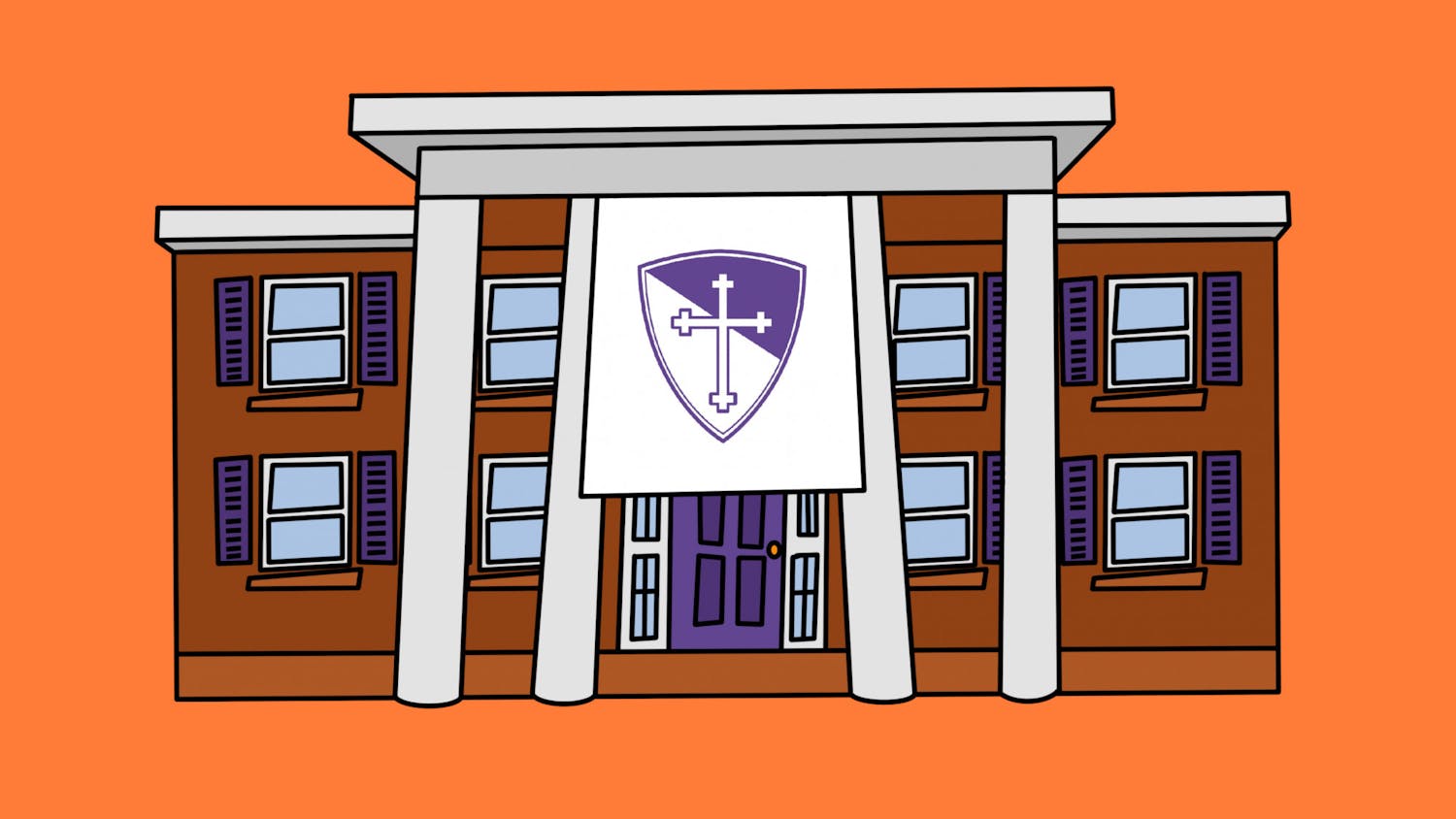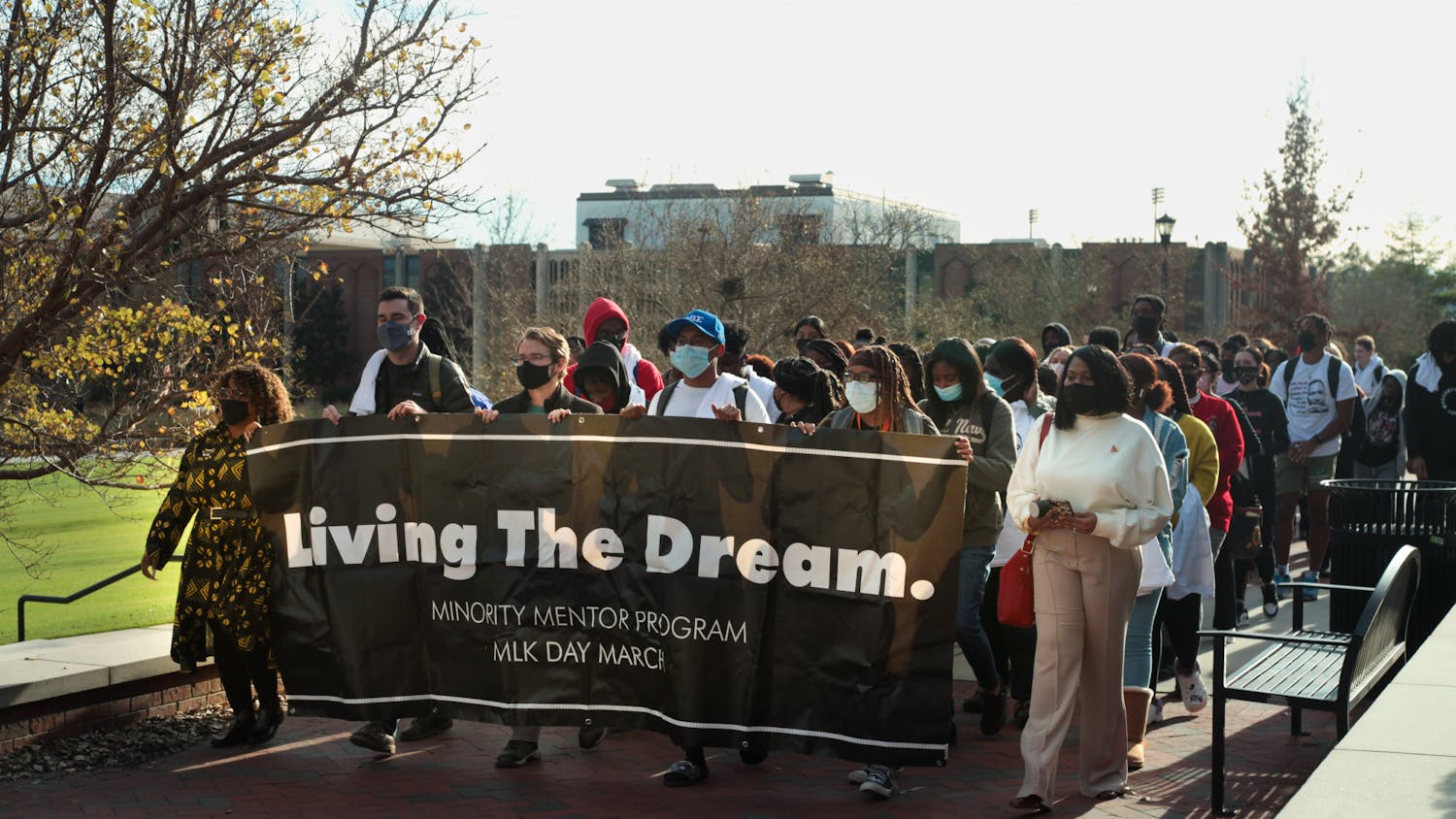Mercer offers a wide array of courses, but there is no class quite like the Fiber Arts and Culture class offered in the Women’s and Gender Studies (WGS) department.
Students in the course gain hands-on experience and skills such as knitting, crocheting and spinning and dyeing yarn as well as knowledge of the historical background of the practice. Currently, students in the class are making items to donate to newborns and their families.
Senior Faith Reagin is currently enrolled in the course.
“I’ve wanted to take this class ever since my freshman year when I first heard about it,” Reagin said. “I’m an artist, and I’m really driven by material exploration, so I wanted to take the class to expand that for myself.”
The course explores the relationship between gender and fiber arts, which is how the class found its home in the WGS department
Read more: Women's and Gender Studies students continue long-held traditions in Fiber Arts and Culture class
“The fiber arts lie in the sphere of the domestic arts, which relegates those arts to the realm of women's work,” instructor Virginia Young said. “Importantly, the fiber arts across history and across cultures gives us a glimpse into the role of women, men and children in various cultures, as well as allowing us to consider the critical role of fibers and fabrics in our history and in our daily lives.”
Years ago, Young and biology professor Linda Hensel submitted a proposal requesting that the course be included in the Creative Expression block of Mercer’s general education curriculum. They were met with opposition.
“Notably, some of the faculty didn't think that scientists should be teaching a class in the 'art' block,” Young said. “Additionally, there were some who did not think that the fiber arts should be included because it is traditionally considered craft instead of art.”
This is, in fact, a topic of discussion in the course.
Junior Rosie Maino is currently the teacher's assistant for the fiber arts class.
"I definitely do think there are elements of creativity in the class, and I think if you just hear that it's about fiber arts, you might not recognize that," Maino said. "I think we tend to view fiber arts as a craft, which is kind of ironic because in the class we learn about how fiber arts are often kind of diminished and pushed aside by thinking of them as a craft. Yet there are a lot of examples of fiber arts that are fine arts."
This is one element of the class that relates directly to Women's and Gender Studies, according to Young.
“The biggest emphasis is thinking about women’s work, how it’s been valued or not valued throughout time,” Young said to The Cluster in 2019. "This is not a valued type of art. And that’s because it’s largely women’s work."
Reagin said that she considers fiber arts to be an art.
“I think the distinction between ‘fine arts’ and ‘crafts’ is genuinely stupid because really it is just a division made up and perpetuated by a bunch of old white guys who wanted to feel superior,” Reagin said. “I consider all creative activities to be art, and anyone who engages in them to be an artist.”
Art history professor Erin McClenathan shared a similar sentiment.
"There's some excellent scholarship out there in art history and visual studies that reunites art and craft, refusing what I see as a false binary,” McClenathan said. “But we've got plenty of work ahead.”
According to Mercer’s catalog, the Creative Expressions section of the College of Liberal Arts and Sciences's gen ed program intends to help students “develop aesthetic sensibilities, personal creativity, and/or the ability to critically analyze and articulate meaning [through the] study or creation of artistic works.”
Eligible options for this fulfillment include courses in art, English, philosophy, theatre and music.
“What I can say is that there are other modifications being made to the Creative Expression area in General Education,” McClenathan said. “And that conversation involves assessing which courses best fit.”
Reagin said that she thinks Fiber Arts would be a good fit for the Creative Expressions requirement.
“I definitely think Fiber Arts should count as a Creative Expressions course because it is a very hands-on learning experience and you get to learn this new skill that you'll always have,” Reagin said. “I think being creative simply means making things, and making clothes or fabric works is just as valid as making drawings or paintings.”
While Young said she has considered re-submitting the proposal, she is happy with the current state of the class.
“The students that take the class are students that truly want to be there, not because it fulfills some gen-ed requirement," Young said. "They want to learn more about the fiber arts and learn some of the techniques that make up the fiber arts.”
This was the case for Maino, who took the course in 2019.
"I just kind of signed up for it because it sounded cool," Maino said. "I had done some weaving on my own for an art project in high school and found that I really loved it and I already knew how to crochet, so I thought that learning about fiber arts as a class would be really interesting."
Samantha Homcy ‘23 is a junior at Mercer majoring in journalism and criminal justice. She has been working at The Cluster since her freshman year and served as Social Media Co-Manager during the spring 2021 semester. She is currently a practicum intern with WMAZ-TV. In her free time she enjoys music, community service, watching TV and finding new ways to get involved on Mercer’s campus.





